I had a chance to play Butter Brook Golf Club in Westford, Mass, today. This is a Mark Mungeam course that opened 9 holes in 2004. Evidentally, the back 9 got caught up in environmental issues and it took a few years to complete.
After playing Mungeam's Oxford Greens in Connecticut, my expectations were very high. Oxford was one of my favorite new courses when I played it last year. The par 3s at Oxford in particular are spectacular.
Butter Brook doesn't have quite the same wow factor. Instead, it is a very solid, very fun traditional New England layout, with tree-lined fairways that can be tight in spots (although not Cyprian Keyes tight). After the first few holes, I thought a comparison with the Captains Course in Brewster was appropriate. It came as a shock, then, to reach the 12th tee and suddenly find a golf hole with a huge fairway and not a single tree. The next few holes have this same open, expansive feel and it is like you are on a totally different course. I loved it. More about these back 9 standouts later.
Some pictures:
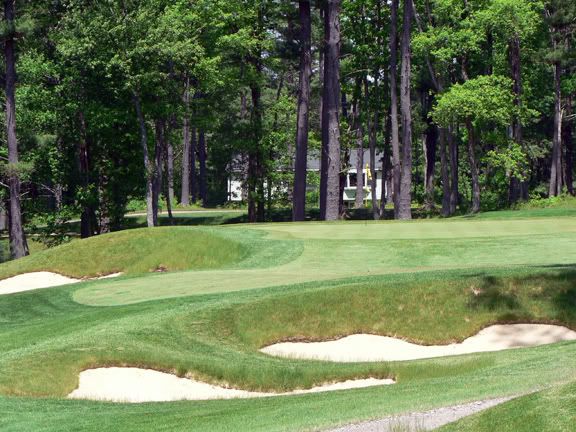
The opening hole is a par 5 that bends to the left. It's a pretty easy entry to the course, although the layup takes some finesse. A good layup leaves a wedge to a fairly small green.
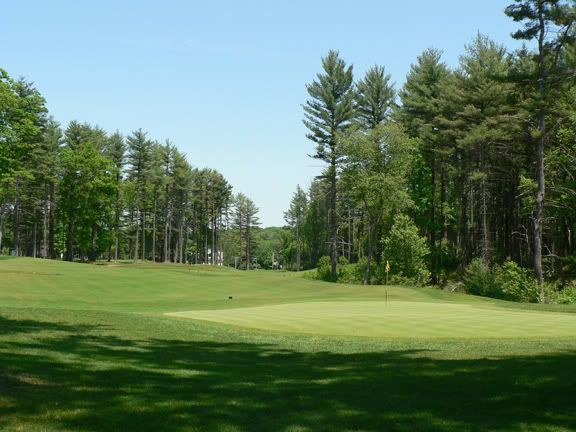
The second hole is a 316-yard par 4. This is a crappy picture looking back down the fairway. There is a hazard to the right. You've got to decide if you want to hit driver over it or an iron short. There is room to go around it, although the hole is so short it isn't worth the risk. I hit 5-iron that ended up great but when I play it again I will probably hit 7 to be safe or driver to try to get on the green.
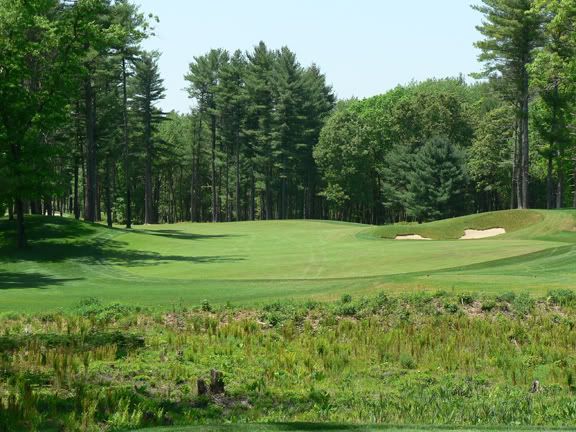
I didn't get a picture, but the third is a nice 136-yard par 3. This is the tee shot on the 403-yard 4th. The hole doglegs sharply to the left, where it also runs down a big hill. Seems like the bunker to the right would be an aiming bunker, but I found that you really want to be well to the left of that. I went over the bunker and blew my drive into the rough through the fairway. Staying left gives you a geat kick and leaves only about 140 back uphill to a large, two-tiered green that slopes severely from back to front.

The second par 3 is also short at 130 yards. The hole was cut front right, and any shot that landed within 10 feet of it kicked severely to the left. There are some cool rock outcroppings that were left around the green.
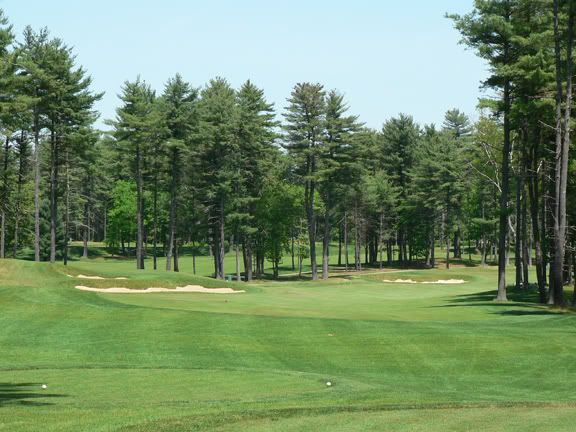
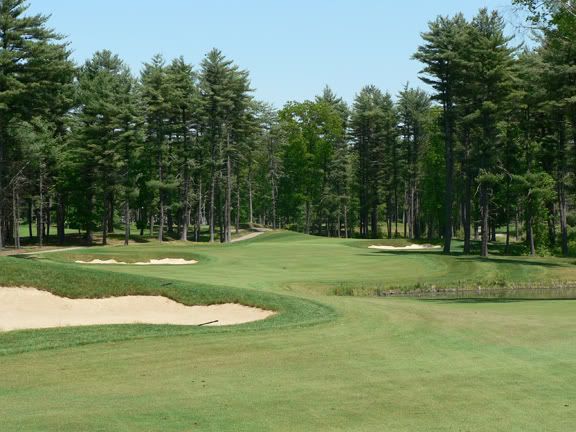

Three views of the 436-yard 6th. This is a very good hole with a demanding tee shot. There is lots of room behind the bunkers on the left, but it is a poke to carry them. The pond on the right is very much in play. Looking at the first picture, I aimed at the gap between the near bunker and far one and actually hit one straight. I was left with about 130 yard back uphill to a green that is much longer than it appears from the fairway.
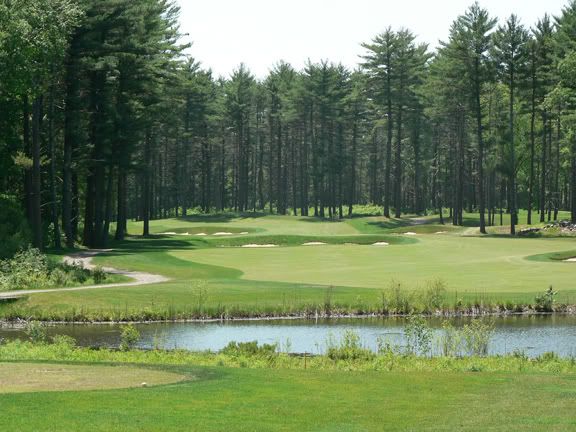
Another good hole, the 554-yard 7th allows all sorts of options. Try to carry the crossbunkers off the tee or take the safe route and land short. For the second shot, there is lots of room to bail out on the right, but the shortest distance to the green is down the left. There is a hazard down the left, which gives very little margin for error.
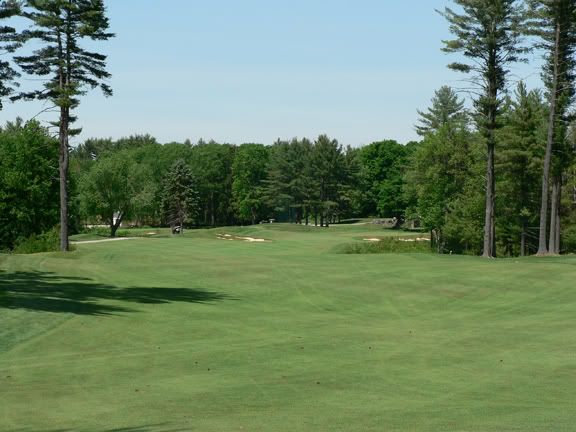
Didn't get a picture of the 171-yard 8th, but it was an uphill par 3 with bunkers protecting the left side. This is the second shot on the 618-yard 9th. The tee shot bends hard to the left, although you can play short to where the dogleg starts to turn if you just accept the fact that there's no way you're getting there in two. The second shot plays downhill. There is tons of room to the left and a little magnet of a hazard on the right.
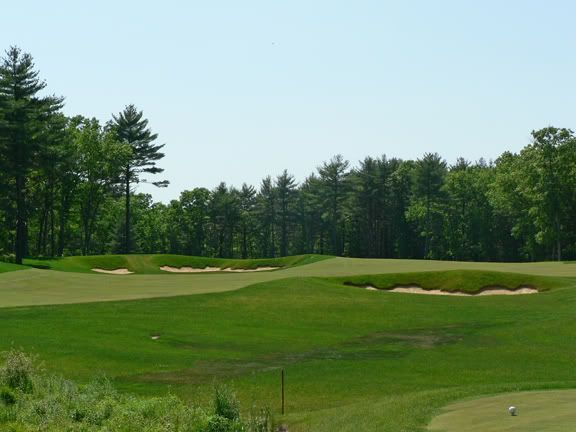
The back 9 starts with one of the longest walks from green to tee I've ever experienced. It fet like half a mile before we arrved on the 10th tee. I would guess that the range, which we passed on our trek, was originally the 10th hole. It seems perfectly place for that and it looked like there might still be a green there. Anyway, the tee shot on the 380-yard 10th is cool, with the hill and huge bunkers blocking any view of the fairway. Left is good here, as there is OB all the way down the right (wish I'd known that).

The par 3 11th is a beast at 250 yards, but there is ample room to run the ball onto the green. There is an ineresting depression in the front, left of the green that you don't want to have to putt through.

. . . And then you come to this. After hitting down corridors, you stand on the tee and look out at an open field. The 12th is 521 yards and slightly downhill. With no trees, the wind picked up by a good 10 mph. Not one of the four of us hit a good tee shot on what seemed like it would be the easiest driving hole so far. This is a very solid par 5.


The Road Hole? It sure plays like it, although at only 321 yards it also has the allure of a driveable par 4. Yes, to get to the green you need to hit over the left edge of the barn. This was by far my favorite hole on the course. It has everything—blindness, risk/reward, quirk. Definitely one that you will remember years later. It's a cool greensite, too, with bunkers protecting short left and long right with room to run it up through the middle.
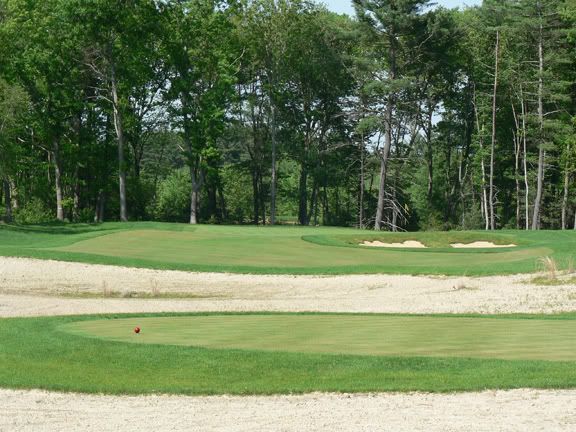
The par 3 14th is 200 yards and plays slightly uphill. The green definitely favors a fade. This is the last par 3 on the course, and as a set there is some good variety without a real standout. Again, just very solid.
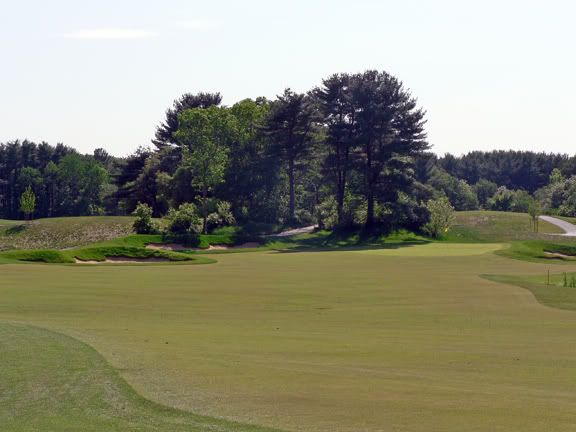
I found the tee shot on the 447-yard 15th to be one of the more difficult on the course. There is water right and bunkers left. The safe route is left, but that leaves a very long second. And with no trees, the wind is strong here (and, at least today, not helping at all). Going at the water down the right is the more direct route, but any kind of flare will end up in the hazard.
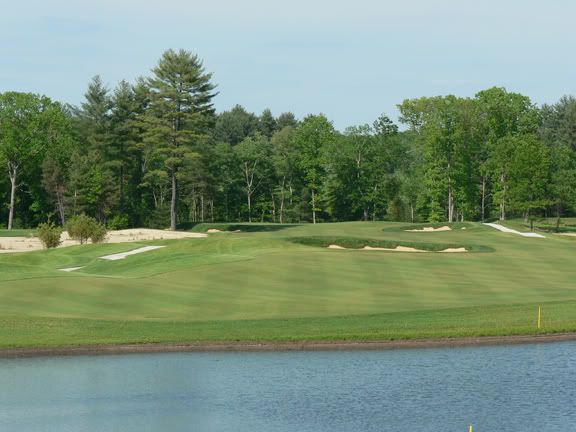
After a few tough holes, it is a relief to come to a reachable par 5. The tee shot needs to carry a pond, but the water isn't really in play unless you hit a very bad shot (or are playing from the wrong tees). More options present themselves here, with the decision to try to fly the cross bunkers or stay short and take three shots to the green.

The 17th has some Cyprian Keyes in it, with a forced carry over a hazard to an almost perpendicular fairway. At 416 yards, the hole demands a draw to leave a relatively short approach. Unfortunately, a draw also brings into play the hazard that runs all the way down the left side. This is a difficult green to hit with a long iron, so the risk is well worth it.
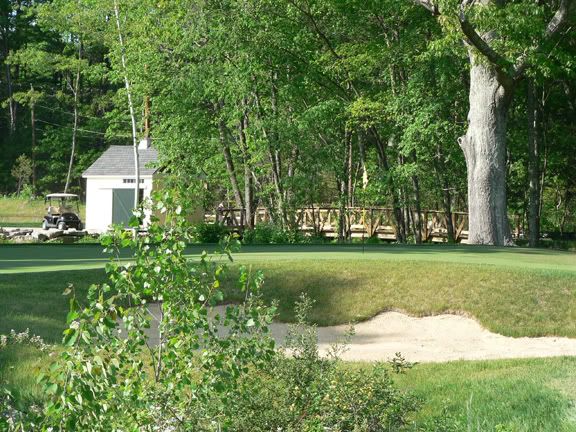
The 18th isn't a bad hole but it also isn't a very dramatic finish. At only 355 yards, it doesn't offer much of a challenge. I hit 3-iron off the tee and was left with about 120 (it was playing downwind). The crap in front of the green really prevents you from hitting driver. I gave it a shot for fun with a second ball to see if the hazard was in play and sure enough went right in it. I wish there was more of an opening at the green to tempt you to go for it. Otherwise, it is a pretty easy par or birdie finish for the better player without ever forcing you to think or second guess yourself.
All in all, I would definitely recommend Butter Brook. It doesn't have the visual pop of Red Tail or the very impressive par 3s of Oxford Greens, but it is a great example of traditional New England golf at its best, coupled with a few holes that stand out for their uniqueness. It is a place that I would love to play every day, because it requires all sorts of shots. You need to be straight with the driver, there are many opportunites to take risks or play safe, and in the exposed areas you are forced to hit lower shots to try to control your trajectory. It is also half the price of Red Tail ($50 vs. $100).
Although it is by no means a flat course (there are all sorts of rolls in the farways), it is very walkable. However, the walk from 9 green to 10 tee is a beast, and there are a few other spots on the back 9 where a hike is involved. I would guess these spots are a result of routing around environmental issues, but I don't know that for sure. Even with that negative, the back 9 is a treat, filled with incredible variety. I was very happy with the course through the mature front 9 holes and didn't know what to expect on the newer back 9. The back was even better.